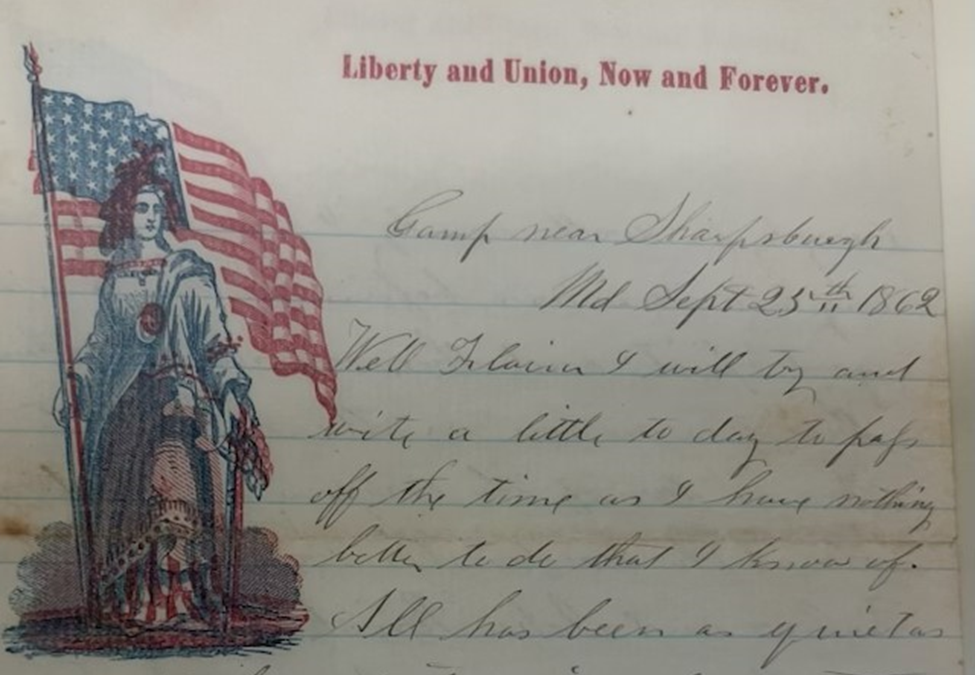Medical illustrations and drawings are a reflection of the state of medical practice at a specific moment in time providing a visual record of science, technology, and anatomical knowledge.
The artwork of Daniel S. Young highlights the artistic and medical contributions of an American Civil War era medical illustrator in a military context. Daniel S. Young: American Civil War Medical Illustrations on JSTOR. His artistry paints a portrayal of how medical illustration informed medical professionals during the 19th century. Young’s Civil War medical illustrations were crucial in educating doctors on surgical procedures and about previously unseen wounds. While medical illustrations such as Dr. Daniel Young’s served to educate doctors they were also important in aiding veterans in their pension claims and showing how the war impacted the soldiers’ health.
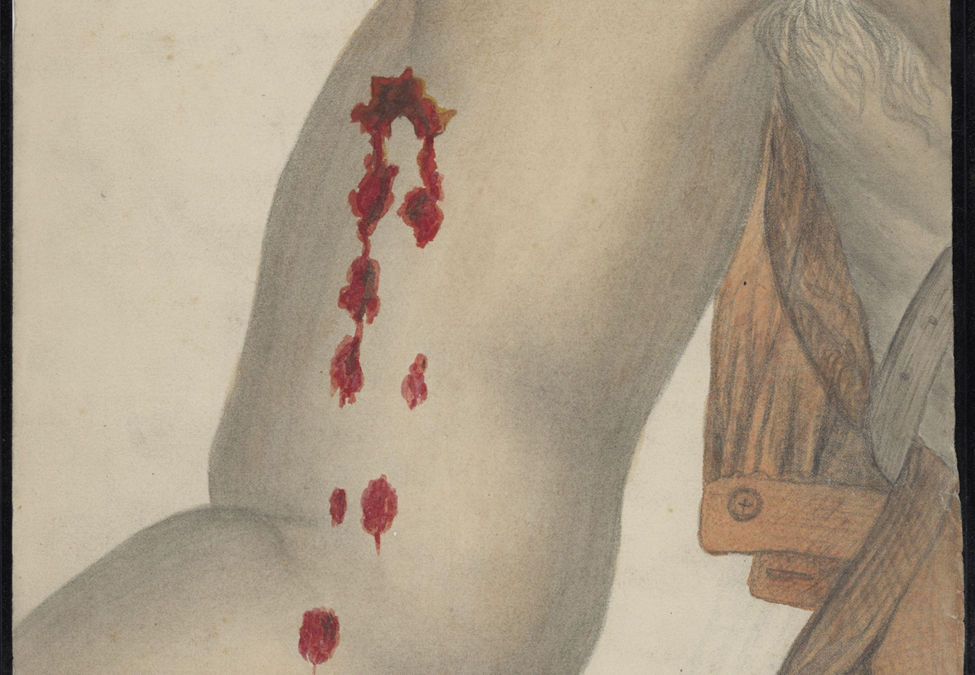
NOTICE: This collection contains illustrated portrayals of graphic wounds and some depictions of male anatomy.
Medical illustrations and photographs supported soldier’s pension claims by demonstrating proof of their disabilities. These images visually showed the extent of their injuries through depictions of their amputated limbs as well as ammunition entry and exit wounds.They were utilized in documentation for pension applications providing concrete and compelling evidence of war-related injuries that could be directly attributed to military service.
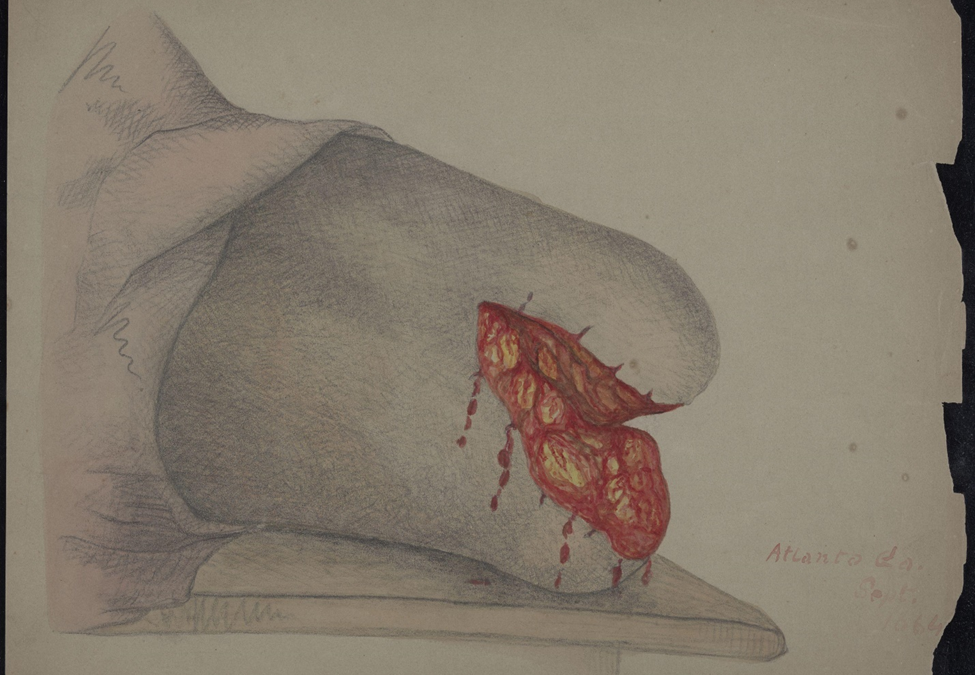
Medical illustrations augmented medical examinations in pension claims as a supplement to doctors’ written reports, reinforcing the severity and permanence of the veteran’s condition and validation of the veteran’s claim for support. They gave an impactful way to substantiate the physical toll of the war and strengthen the case for deserving veterans to receive the pensions they needed for long-term support to live with their injuries and disabilities.
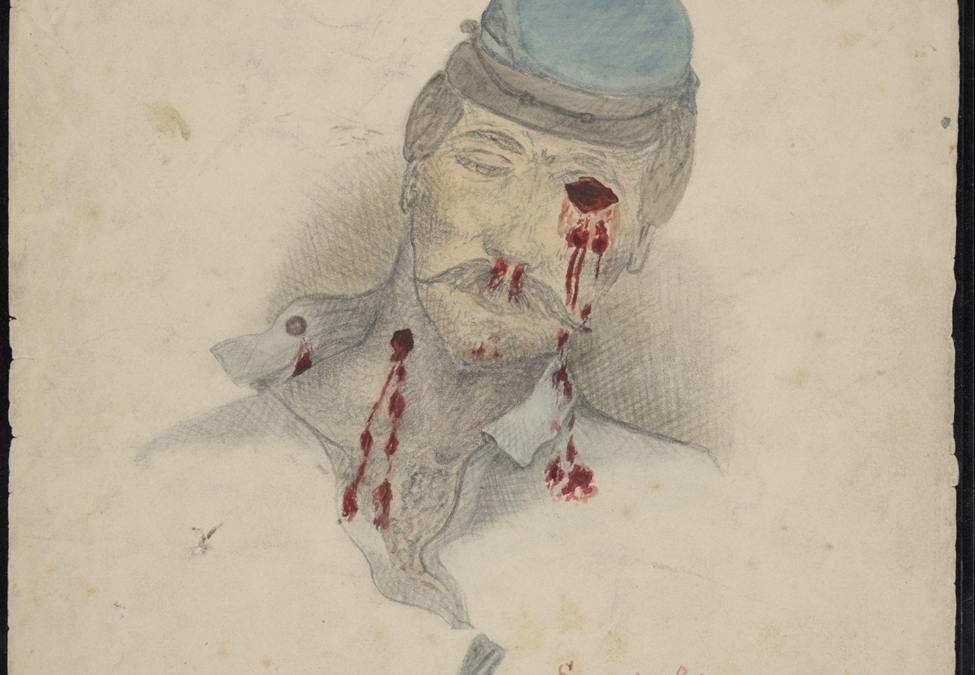
Medical illustrations from the American Civil War are important today because they offer valuable insights into the history of military medicine, diseases, and the traumas faced by soldiers. They serve as a visual record of the advancements and challenges faced by military medical professionals during a period of prolonged intense conflict.
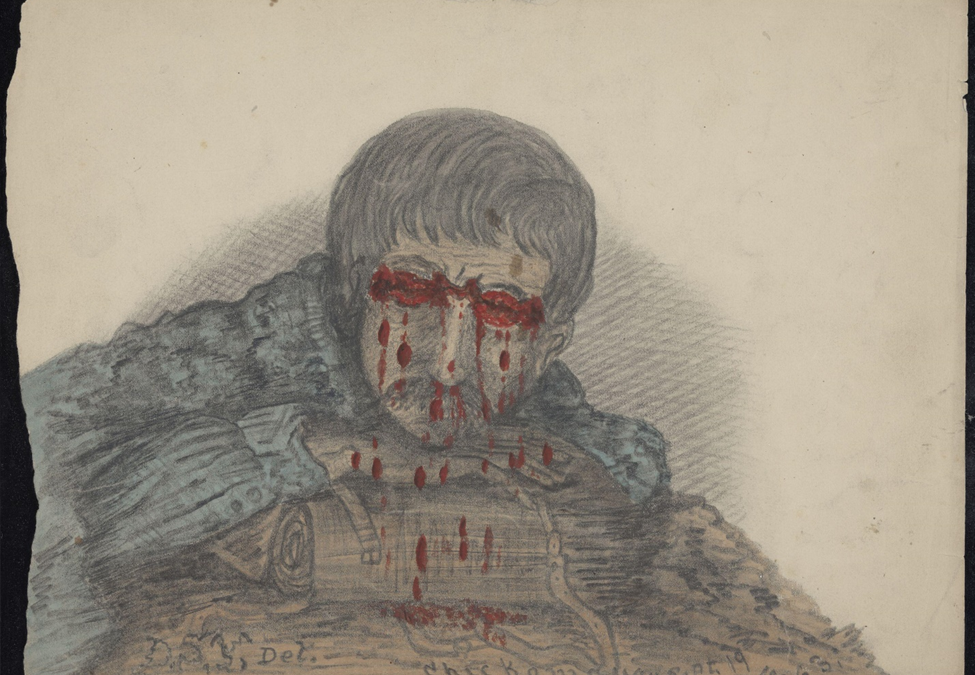
Young’s illustrations are noteworthy in how they demonstrate the ways that the Civil War conflict inspired significant advancements in medical wound care, disease prevention, surgery techniques, and the development of organized support agencies. The United States Bureau of Pensions was greatly expanded following the American Civil War in order to aid wounded veterans and their families. These illustrations help us understand the ongoing development of medical practices, such as the limited knowledge of disease causation prior to the germ theory of disease and the crucial need for surgical sanitation. Young’s illustrations from Dug Gap Georgia, September 10, 1863 portray the ramifications of poor hygiene and sanitation.
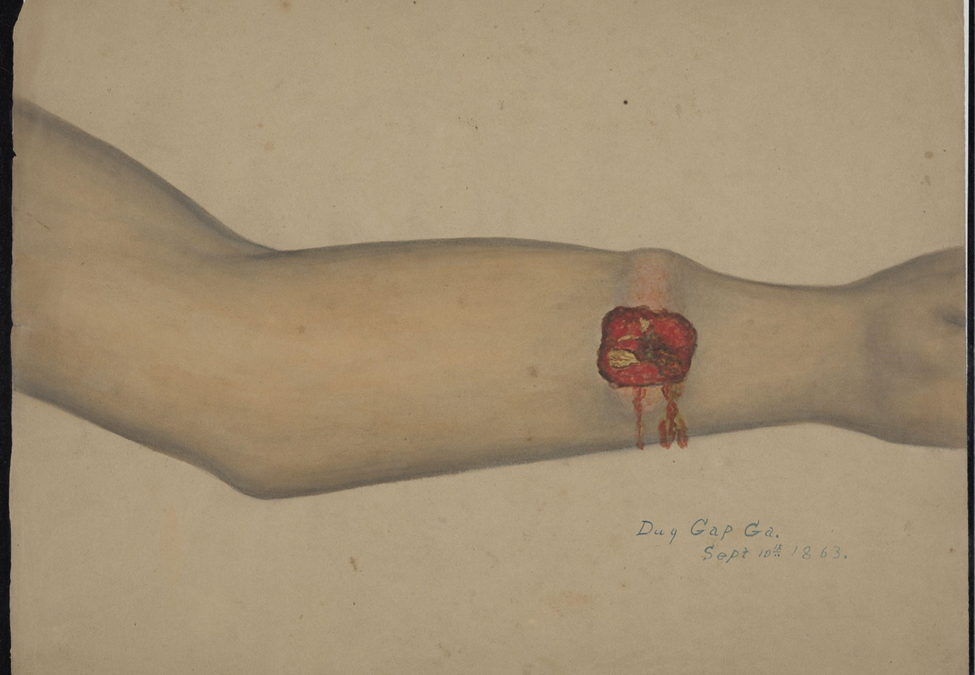
The need for good medical hygiene and sanitation is depicted throughout Young’s Civil War medical illustrations. He saw a high number of deaths due to disease and sepsis. Modern medical professionals can understand and respond to disease outbreaks by studying the challenges faced during the Civil War.
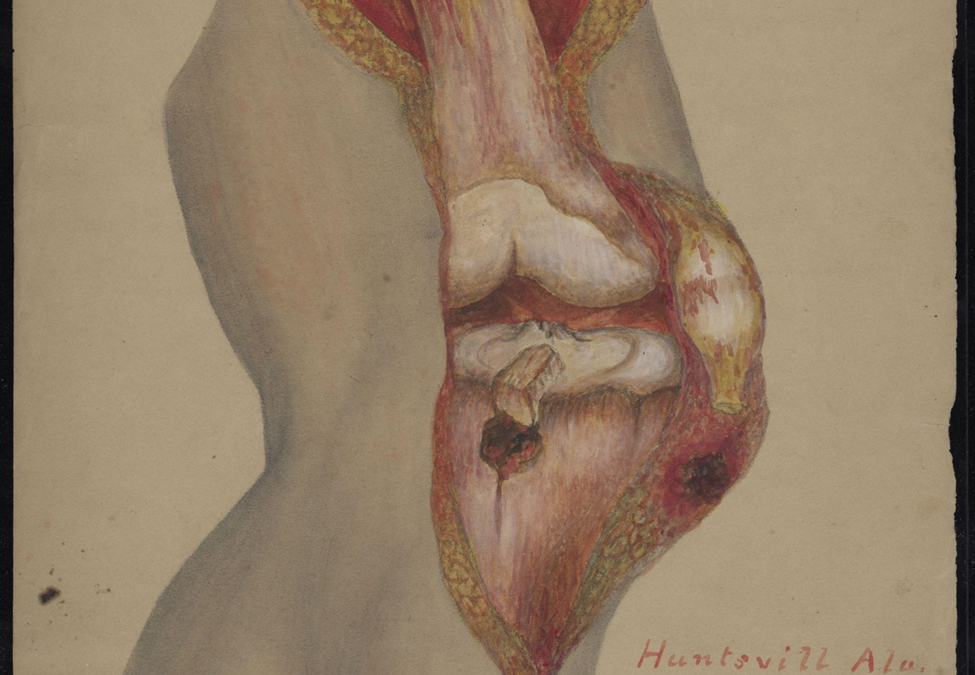
Young’s illustrations show advancements in surgical techniques. Soldiers on both sides of the Civil War had a high number of amputations from battlefield injuries. Military surgeons were pressed to develop, experiment, and refine their operation techniques. Young’s illustrations of surgical procedures recorded advancements contributing to standardized surgical procedures. The medical knowledge gained during the Civil War helped establish modern surgical practices and advance the development of prosthetics.
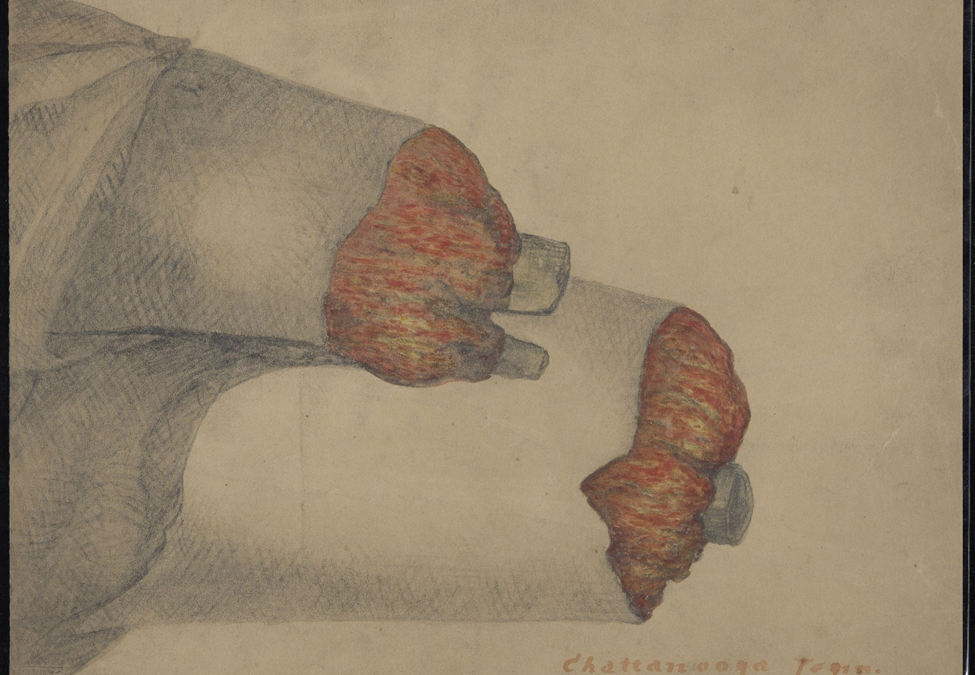
In addition to the medical aspects of soldiers’ wounds, Young’s illustrations captured components of the social context of the Civil war. The illustrations represent the experiences of Union and Confederate soldiers. While the majority of his artwork is of Union soldiers his illustration from Scary Creek Virginia, July 17,1861 depicts the wounds of a Confederate soldier.
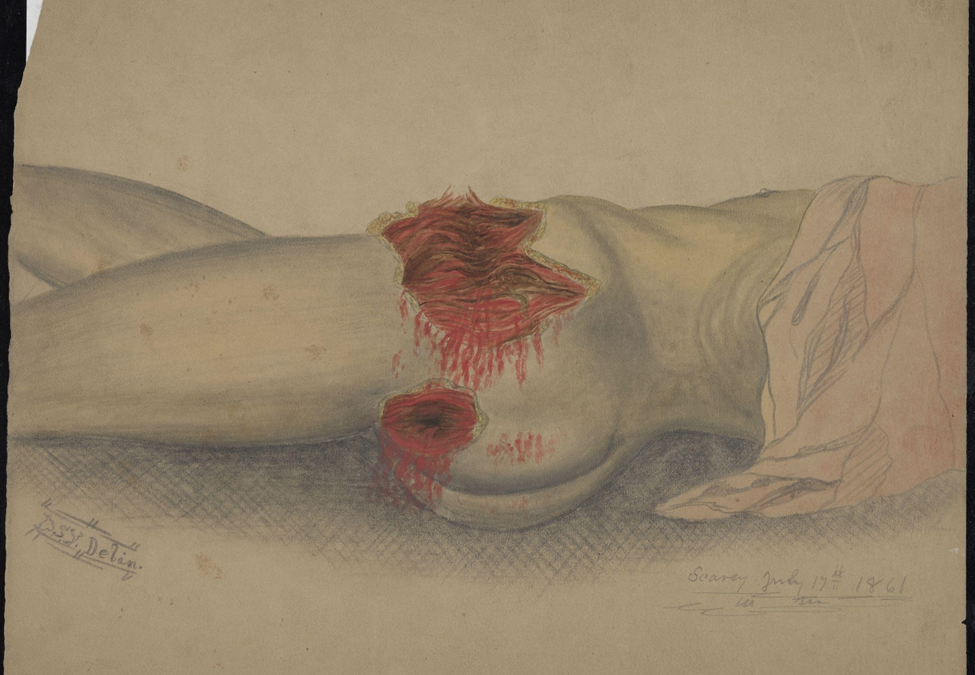
Young’s portrayal of a wounded female civilian from Stone’s River Tennessee, January 2, 1863 is indicative of how the American Civil War impacted residents in the vicinity of battles and skirmishes. His illustrations can be utilized to study the historical context of medical support during the Civil War.
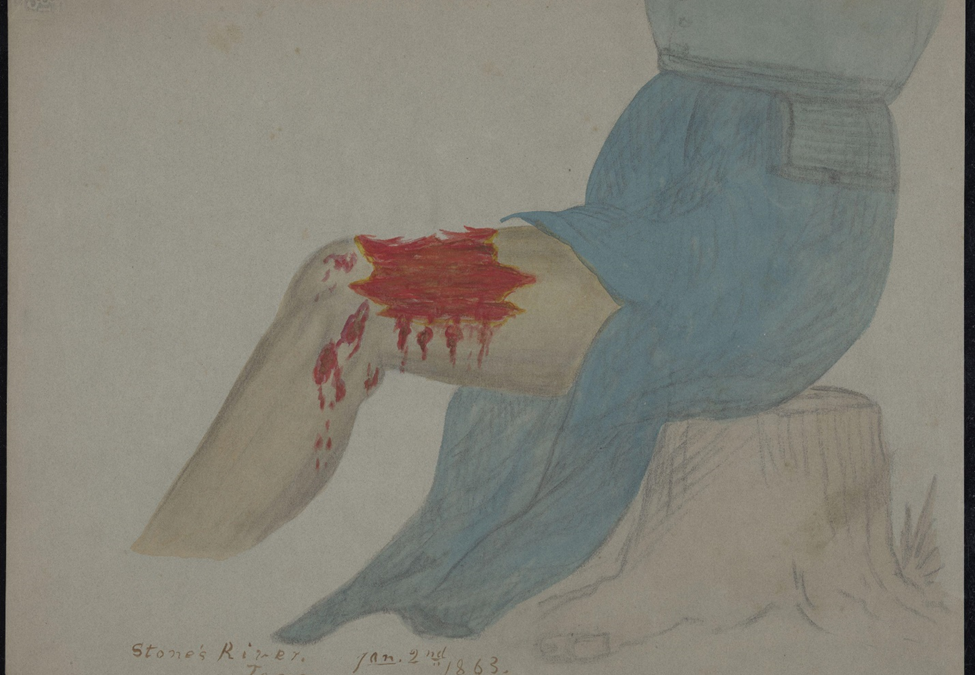
Young’s documentation of the soldiers’ wounds can serve as an inspiration for modern medical practices. An understanding of wound care combined with the need to prioritize the soldier’s injuries advanced the practice of triage in the military context of the American Civil War. The triage system continues to be utilized today in emergency medicine and mass casualty conflicts.
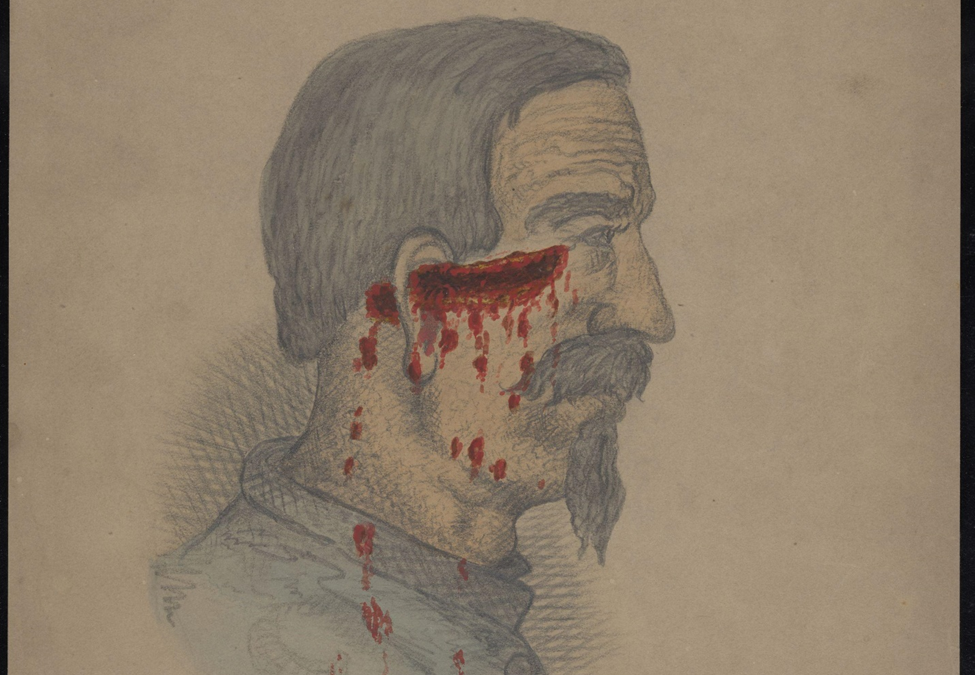
The Daniel S. Young Archives were donated by the University of Cincinnati’s College of Medicine to the Medical Heritage Center, now the Henry R. Winkler Center for the History of the Health Professions in the Donald C. Harrison Health Sciences Library. Young, was a surgeon, artist and inventor. He was born in New York in 1827. Young graduated from the Albany Medical College, New York, in 1855 and moved to Cincinnati, Ohio. During the American Civil War Young was the surgeon of the 21st Regiment Ohio Volunteer Infantry (O.V.I.).
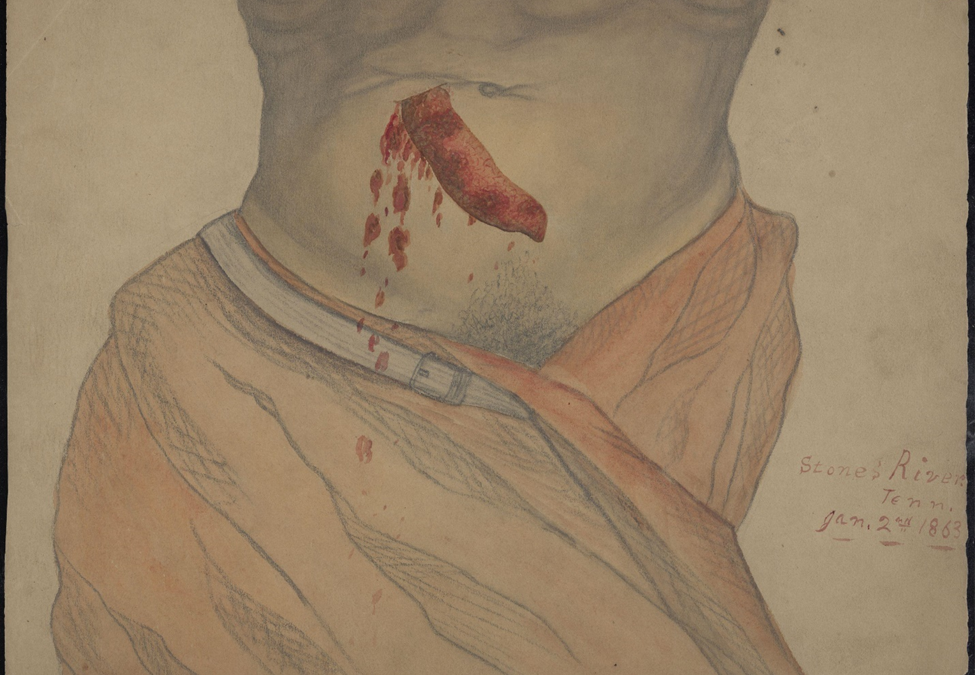
Throughout July 7, 1861—April 5, 1865 Young traveled with the 21st O.V.I. administering medical care to injured soldiers and creating medical illustrations of the soldiers’ wounds. During the Civil War the 21st Regiment Ohio Volunteer Infantry (O.V.I.) followed a circuitous route through the regions of Putnam County West Virginia, Eastern Kentucky including Hart County, Rutherford, Coffee, and Hamilton Counties in Tennessee, Madison County Alabama, Whitfield, Catoosa, Walker, Cobb, Fulton, and Chatham Counties in Georgia, and Wayne County in North Carolina.
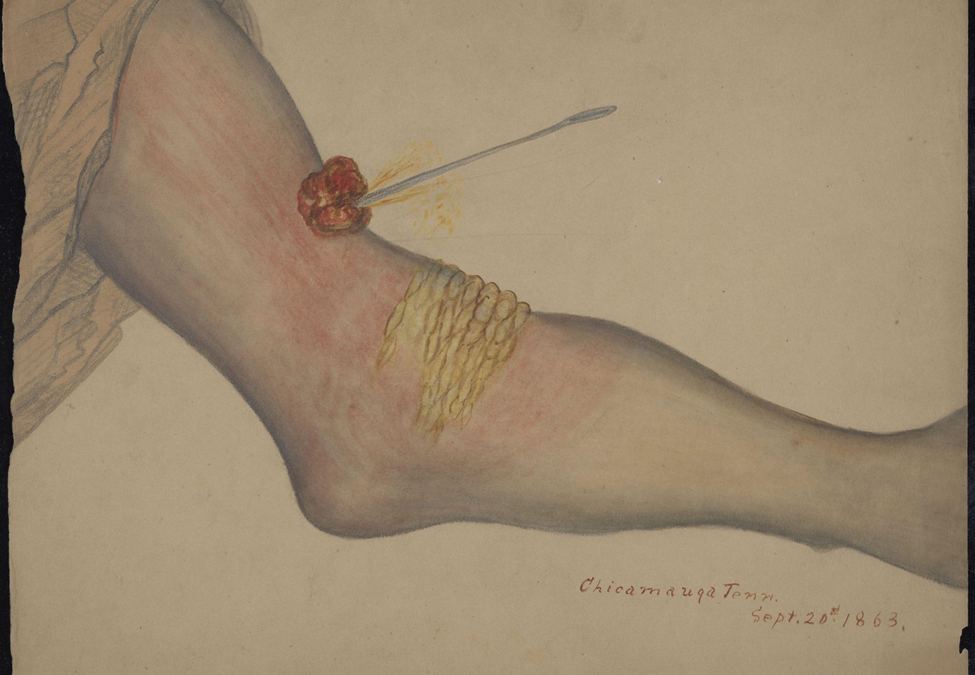
Young was an expert in drawing, painting, engraving, lithography, and print block-cutting. Many of the medical illustrations are dated with the Civil War battle locations. Following the Civil War Dr. Young lectured at the Cincinnati College of Medicine and Surgery. He was regarded by his contemporaries as a surgical expert and contributed writings on military surgery to the Cincinnati Journal of Medicine. Young died in 1902.
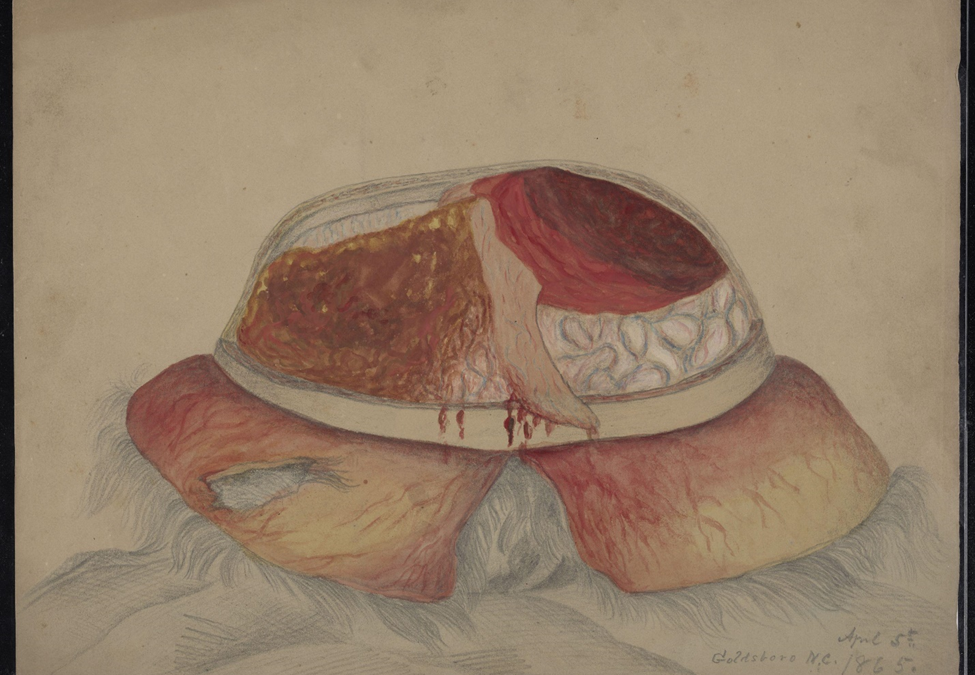
The Henry R. Winkler Center for the History of the Health Professions is honored to partner with Dr. Kris Ramprasad, Dr. Charles Prestigiacomo, Dr. Efrain Miranda, and Dr. Brian Adams on the Daniel S. Young Medical Illustrations digitization project. Dr. Ramprasad was instrumental in researching and composing the medical descriptions of each medical illustration. Drs. Prestigiacomo, Miranda and Adams served as consultants to assist in the identification of anatomical wounds. The Henry R. Winkler Center for the History of the Health Professions is grateful for the partnership with the University of Cincinnati Libraries Digitization Initiatives Team–Sidney Gao, James Van Mil and Sean Crowe. Through this partnership the American Civil War medical illustrations of Daniel S. Young are accessible for historians, students, researchers, physicians, and scholars. The American Civil War letters of Dr. Benjamin L. Askue will be available online in winter 2025-2026.
